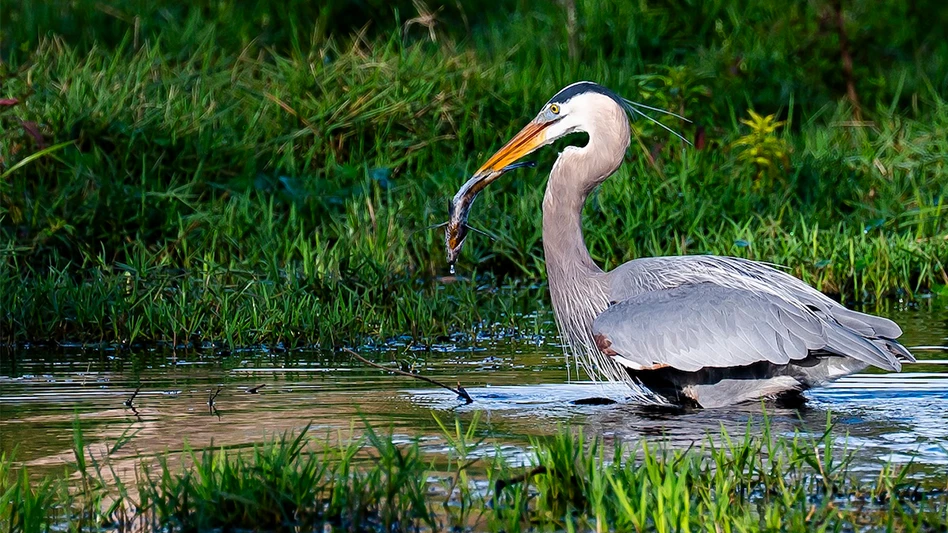I was excited about the opportunity when asked to submit an article about the summer of 2010. This summer was my toughest mental test in a decade within the industry. However I managed to get through without any noticeable turf loss, and as the summer went along the turf became healthier. Nothing I am about to say is going to be “earth shattering” but I hope the key points to my success this past year can help others in this business succeed in the future.
Fertilizers: When it comes to granular fertilizer I kept applications closer together with slightly less than typical half pound of N rates. Fairways and rough applications were organic and spaced out every month and a half and tees were on a monthly cycle. On greens and tees I used organic fertilizer and sulfate of potash during aerification in the spring, with a gypsum application before the summer stress hit, followed by a standard dormant feeding in the fall. Liquid fertilizer was applied every two weeks and incorporated into the spray program on tees and fairways with weekly applications on greens. I added standard liquid fertilizer in every spray with a rotation of molasses, manganese, processed fish meal, iron, kelp, and calcium. This rotation was performed every month during the growing season. This allowed for keeping away from the “peaks and valleys” and made for a consistent N and micronutrient feeding all season long.
Regulators: When the dry and hot weather hit a lot of people backed off on the amount of regulators being used. I use rates that have been termed “suicidal” by some but didn’t back off. I think this plus the use of multiple regulators in the program had a huge impact on the performance of the turf.
Cultural Practices: REMEMBER THE BASICS! Most everyone pulls cores but who remembered to verticut, spike, groom, top-dress, and deep-tine tees, greens, and fairways this past season? How many of you think your turf would have performed better if you did? Tees and greens were verticut three times and fairways once. Top-dressing and spiking greens was performed every two weeks. I got more from my spiking unit by taking the turf guards off which allowed for deeper penetration with little more disruption than with the guards on. Find a good large area spiking unit and your fairways will be thanking you all season long. Greens were groomed once a month with a deep-tine aerification in the fall.
Soil and Water Testing: When is the last time you had a soil/ water test done? Do you guess as to what the soil and turf is lacking and do you just assume your water supply is free from pollutants? I have two separate soil/ water tests done each year. The spring and fall soil tests came back with everything in acceptable ranges. I believe this is another major reason the turf not only survived but thrived this season. The spring water test came back with high sodium levels and the fall test was perfect. I could address the sodium issues before even charging the irrigation system because this simple test was performed. If soil and water chemistry is in balance success will generally follow.
Employee Training: How many of you took the time to properly train your employees on how to hand water or mow properly? Do you notice your employees take the same route across the turf day in and day out? Are you confident your assistant(s) could keep the course alive and thriving if an emergency were to arrive? Too much water is a recipe for disaster but just the right amount is priceless. Showing a crew member the proper way to turn a mower around and training them to take different routes across the course can save your turf from stress. I check myself a few times a year by showing up 30 minutes late when everyone is out the door and then observe what is taking place. The only thing this year I would have changed was a crew member taking a triplex with groomers instead of one with verticutting units. I didn’t blame him... I blamed myself!
Water Management: Knowing how much water to apply is by far the most stressful part of my job. I went to school to study agronomy... not predict the weather! Use a thermometer. Take a pocket knife and cut a piece of turf and tug on the roots. Use a soil probe. Never guess. It will only lead to disaster. One water management technique that works well is making paper copies of your greens, tees, and fairways, and highlighting the areas that seem to burn out and get “hot” the quickest. Use the newer wetting agent/ surfactant technologies to your fullest advantage.
Get Rid of the Poa: Another reason I survived this year is that I have been on an aggressive Poa eradication program and letting desirable grasses take over. Poa is almost nonexistent in tees and fairways and the greens are up to 75-85 percent bentgrass. There are few sweeter sights than seeing Poa being encircled by bentgrass! Use herbicide and regulator advancements and verticut to promote lateral growth in bentgrass. Also, is it really going to break your budget to purchase a little more bentgrass seed? It is worth the investment.
Maybe the best advice I can give is trust your instincts... what is your gut telling you? Nothing is wrong with seeking advice, but most likely you know your facility and turf needs better than anyone else. Don’t be afraid to experiment and think outside the box. If some of you think that everything discussed in this article seems expensive I oversee the maintenance for a thirty-six hole property with a maintenance budget under $750,000. If anyone has questions or would like to know more detail on something particular that is summarized in this article I can be reached through my website at www.onparwithgranthuffman.com. Here’s to better weather and fewer sleepless nights in 2011. GCI
Grant Huffman, superintendent, Heritage Hills Golf Resort, York, Pa., www.onparwithgranthuffman.com.

Explore the January 2011 Issue
Check out more from this issue and find your next story to read.
Latest from Golf Course Industry
- From the publisher’s pen: Technology diffusion and turf
- Applications open for 2025 Syngenta Business Institute
- Smart Greens Episode 1: Welcome to the digital agronomy era
- PBI-Gordon promotes Jeff Marvin
- USGA investing $1 million into Western Pennsylvania public golf
- KemperSports taps new strategy EVP
- Audubon International marks Earth Day in growth mode
- Editor’s notebook: Do your part





